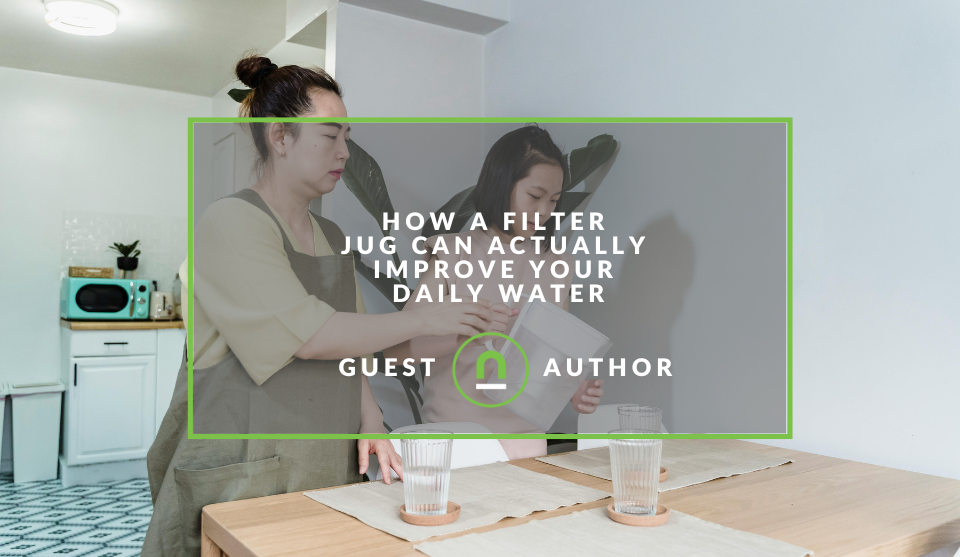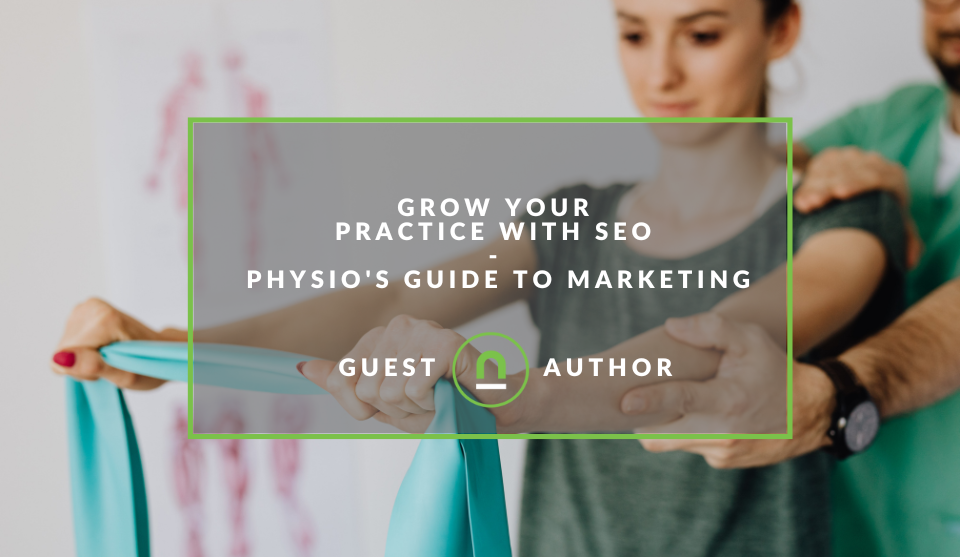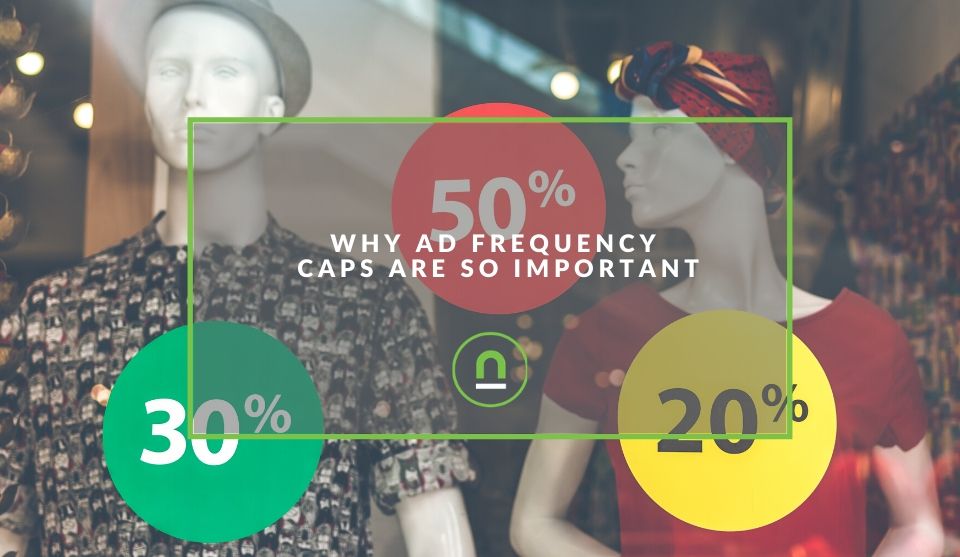Recent posts

Shopaholics
How a Filter Jug Can Actually Improve Your Daily Water
30 October 2025

Doctors Orders
Grow Your Practice With SEO - Physio's Guide To Marketing
28 October 2025

Doctors Orders
How To Grow Your Chiropractor Practice
27 October 2025

Press Releases
Cape Town Welcomes the World - Volleyball World Beach Pro Tour Officially Opens in South Africa
24 October 2025
Popular posts
Extravaganza
Trending Music Hashtags To Get Your Posts Noticed
24 August 2018
Geek Chic
How To Fix iPhone/iPad Only Charging In Certain Positions
05 July 2020
Extravaganza
Trending Wedding Hashtags To Get Your Posts Noticed
18 September 2018
Money Talks
How To Find Coupons & Vouchers Online In South Africa
28 March 2019
Why Ad Frequency Caps Are So Important
17 January 2020 | 0 comments | Posted by Che Kohler in nichemarket Advice
Ads have become almost unavoidable online, and many users have made peace that they are part of using sites like Facebook, Twitter, Youtube and the like. However, as marketing tech improves, the intrusiveness of ads has come under fire as cross-site scripting helps you retarget users on just about any site, service or mobile app.
Creating remarketing audiences, lookalike audiences and retargeting users has become a powerful tool for brands looking to reduce their cost per lead through targetted advertising. When done correctly, it can be a useful marketing tool, but when done incorrectly, it can hurt your brand.
I often see marketers talking about the advantages of retargeting. Still, no one ever talks about the harmful impact of following customers across the web and repeating your ads over and over.
There is a fine line between reminding customers and remaining top of mind, and then there is annoying in your face intrusive advertising. A line many maRketers cross as they desperately search for leads and don't focus so much on their bottom line and performance numbers each month that they forget to think about the adverse effects of putting customers off their brand.
They visited or interacted; they must want it
Many digital markets are merely assuming the fact that if a user interacted with their ad or visited the site or specific webpage that they are interested in the service or product. The assumption is not wrong as many retargeting campaigns can produce high conversion rates, but what about the 90% + that do not convert?
Not every window shopper is a lead, and we have to understand that as markers in the digital arena. Personalisation and contextual relevance is key to creating high-performance ad campaigns, but we need to know our limits.
Setting limits helps manage brand damage from excessive advertising, and this is why every marketer should be using frequency caps on their ads and experimenting with the best performing cap strategy for their brand, product or service.
What is a frequency cap?
A frequency cap allows you to adjust the number of times; on average, a person will be shown your ad within a set period. The frequency cap impacts how many people you will be able to reach and how frequently those people will see your ads.
Depending on the platform you are using you can set your frequency cap so that you either have a higher reach.
- Lower frequency cap - to show ads less frequently to more people
- Higher frequency cap - increase your frequency cap to show ads to fewer people more regularly
In some cases can also choose to increase the average rate of your campaign to prioritise showing your ads to people who will see them more than once.
It is also essential to keep in mind that increasing your average rate reduces the overall number of people you're able to reach in exchange for showing your ads more frequently to people.
Platforms offering frequency caps
Depending on the advertising platform of your choice, you may have the feature built into it natively or as part of the campaign settings for each ad set.
| Platform | Frequency Capping |
|---|---|
| Google Ads | Yes |
| Yes | |
| Snapchat | Yes |
| Yes | |
| DSPs/Exchanges | Most |
| No | |
| No | |
| Quora | No |
| Microsoft Ads | No |
| No | |
| Amazon Sponsored Products | No |
| eBay Promoted Listings | No |
| Etsy Promoted Listings | No |
Why would you want to set a frequency cap?
When metrics start to dwindle many defaults to the idea that the campaign is running out of steam, it could be the tired creative, it could be messaging that is stale, or it could be the targeting that needs adjusting. While any of these could be right and make a difference, it could also be the frequency of which your ads are being displayed.
Customers are projected with advertising messages all the time and while some may be friendly reminder other can be susceptible to advertising fatigue, reducing the impact of your messaging or worse seen as an annoyance and are actively ignored.
Reviewing your ad campaigns and knowing reach and frequency numbers can help you optimise your campaigns. But how you set your frequency depends on what you want to accomplish.
- Reach - Refers to the number of unique users your ad campaign reaches. If two total people see your ad three times each, your reach is two.
- Frequency - Refers to the number of times each of those users has seen your ad in a given period.
If the average member of your target audience sees your ad three times every 24 hours, your frequency is 3. Working through your ad campaigns and looking at which frequency is the sweet spot will help you reduce reaching out to users who aren't interested and spending your budget more effectively looking for reach and frequency for your ads sweet spot.
IE - reaching as many people as you can with a view frequency of three to get them to convert.
Reaching new users with a frequency cap
If you're starting a campaign from scratch and do not have a funnel and churn rate to work with, you will need to start at the top of your funnel. The goal with these campaigns is to maximise reach and give you data and an audience to narrow down prospective buyers with qualification throughout the journey slowly.
At this point, you're hoping to catch the interest of a prospect. This strategy involves showing your ad to a lot of people just a few times as opposed to a few people a lot, so frequency caps may not be applicable but as the campaign matures you may want to limit frequency as those first users are pushed deeper into the funnel and require different messaging.
Another case for high-frequency cap is if your goal is brand awareness, your campaign is time-sensitive. You will want to reach as many users as possible and hope that you can either get viral appeal through users or opening the funnel as wide as possible to get leads in time.
If however you are lead driven and you're trying to reduce marketing spend and optimise campaigns, playing around with various frequency caps could be the missing ingredient.
The critical benefits of frequency capping
- Increased reach - frequency capping is an efficient way to increase reach by expanding the number of unique users that see the ad. Rather than wasting your budget on impressions that won't convert frequency capping helps you prospect for new users to convert.
- Increased CTR - frequency is used as one of the key drivers to improve advertising campaign performance. Click-Through Rates (CTR) have shown to drop precipitously after the first exposure and to plateau at four impressions due to a phenomenon called "ad blindness".
- Improved conversation rates - similar to CTR, the conversion rates also are highest on the first impression and typically diminish after 4 - 6 impressions.
Should I use frequency capping?
If you're going after leads, the goal is naturally to get the cheapest cost per lead possible. Going through impression data and help ensure you reduce wasted spend. For example, If User A didn't click on an Ad set the first six times she saw it, why show her it a seventh time? Especially when your impression sweet spot (best converting) is three impressions.
If you think this doesn't apply to you wouldn't remember that LinkedIn Ads have fixed frequency caps. If an ad were already served to a particular member, he or she would not see it again for 48 hours. While Twitter has claimed to use impression capping by default into their logic, but they only state the exact rules they have in place.
While some ad platforms may be cautious over ad repetition others arent, remember, advertising platforms have an incentive to exhaust your budget and earn more money over time, so if you don't limit your reach, it will continue to display it to users who are less likely to convert.
Remain on the right frequency
While you may feel capping your frequency would allow your competitors to get more reach, in this case, I think its a good thing. Let them chase short-term profits while you build long term real relationships with your customers and drive value through a longer customer lifetime value.
Users are getting smarter, and they're not going to sit around and be chased around the internet if they can help it. We can see this in the growth of ad blockers and first-party adblocking, which is especially the case for high LSM users.
So making sure you remain in a positive light with your customers, building a content strategy and a CRM strategy will become even more critical as ads reach begins to reduce due to oversaturation.
What frequency would you choose?
Do you use frequency capping? How has it worked out for your ad campaigns? Please share your thoughts with us in the comments section below.
Contact us
If you would like us to improve the advertising for your site or want to know more about digital marketing for your business, then don’t be shy we’re happy to assist. Simply contact us
Are you looking to promote your business?
South African Business owners can create your free business listing on nichemarket. The more information you provide about your business, the easier it will be for your customers to find you online. Registering with nichemarket is easy; all you will need to do is head over to our sign up form and follow the instructions.
If you require a more detailed guide on how to create your profile or your listing, then we highly recommend you check out the following articles.
Recommended reading
If you enjoyed this post and have a little extra time to dive deeper down the rabbit hole, why not check out the following posts on advertising.
- What Does A Young Digital Agency Really Think About Your Advertising?
- Why You May Want To Consider Advertising on Reddit
- What Are Google Discover Ads & How To Use Them
- SnapChat Launches Instant Create For Quick Ad Setup
- Google Launches Reach Planner For Better YouTube Advertising
- Will Tinder Ads Have Consumers Swiping Right?
- How To Earn Cryptocurrency By Running Ads on Your Site
You might also like
How a Filter Jug Can Actually Improve Your Daily Water
30 October 2025
Posted by Jasper J in Shopaholics
A look at some of the contaminants you can find in seemingly clear water coming from your taps, and what you can do to enjoy a cleaner higher quality...
Read moreHow To Grow Your Chiropractor Practice
27 October 2025
Posted by Nathan Meyer in Doctors Orders
Turn online searches into real bookings — real tips to optimise your site, all to grow your chiropractor practice and drive leads online. Read more.
Read more{{comment.sUserName}}
{{comment.iDayLastEdit}} day ago
{{comment.iDayLastEdit}} days ago
 {{blogcategory.sCategoryName}}
{{blogcategory.sCategoryName}}
